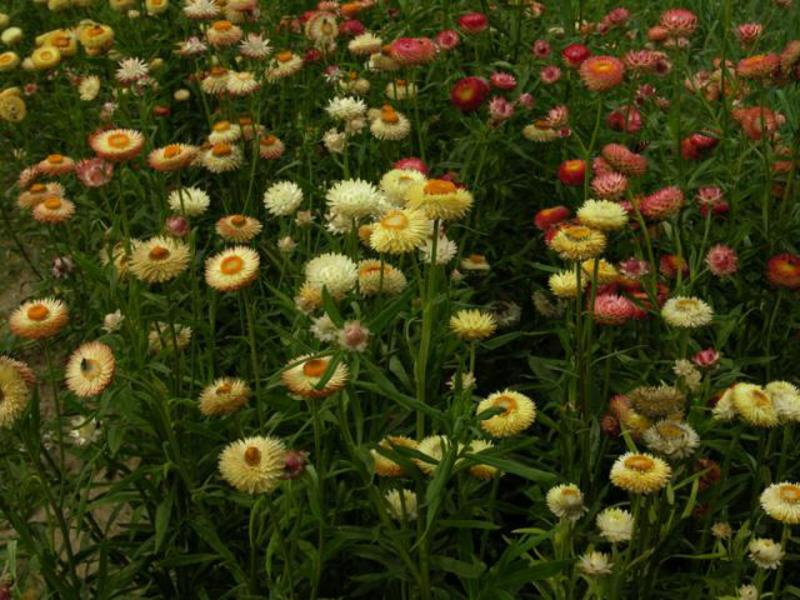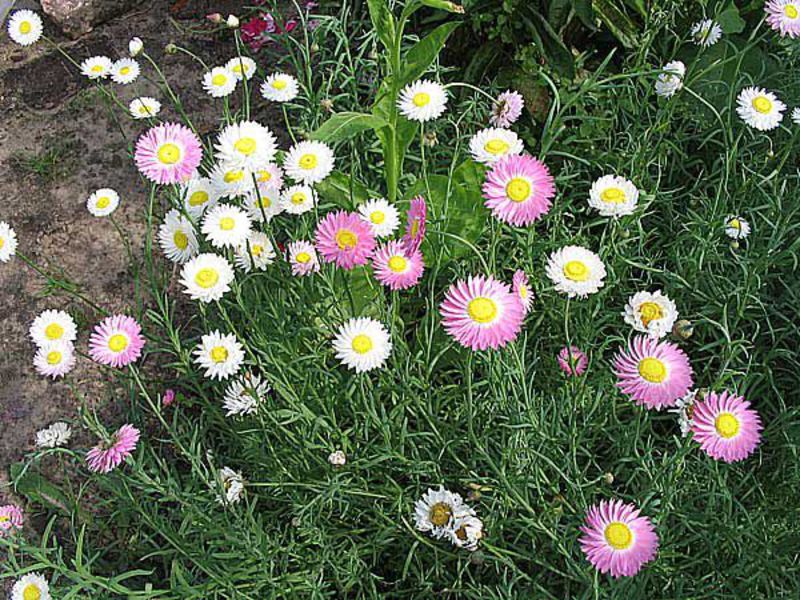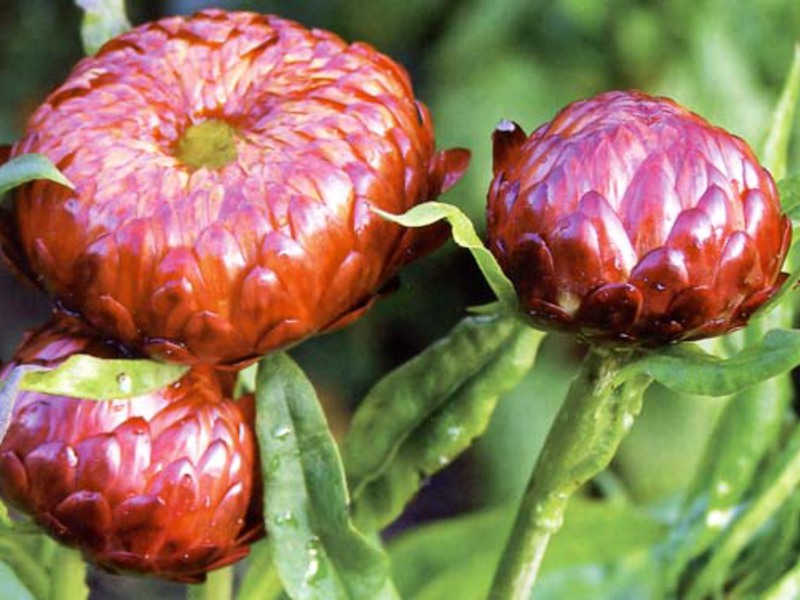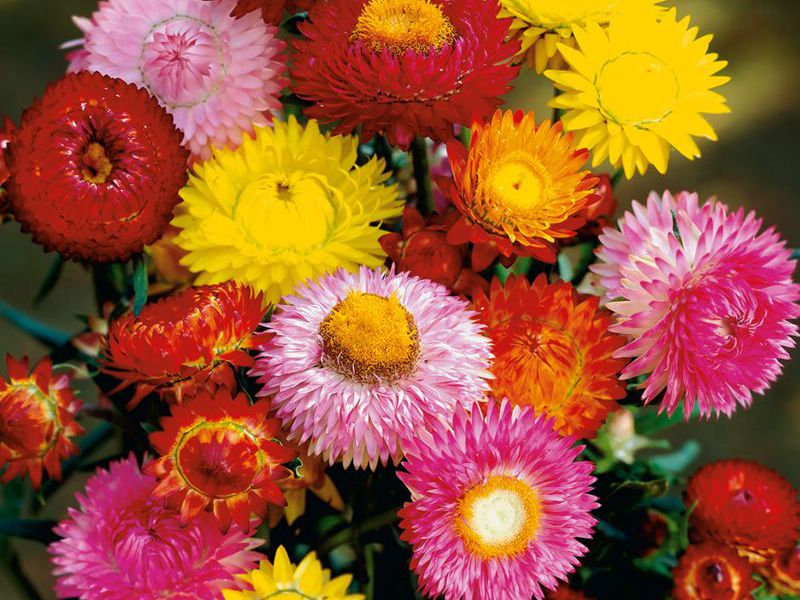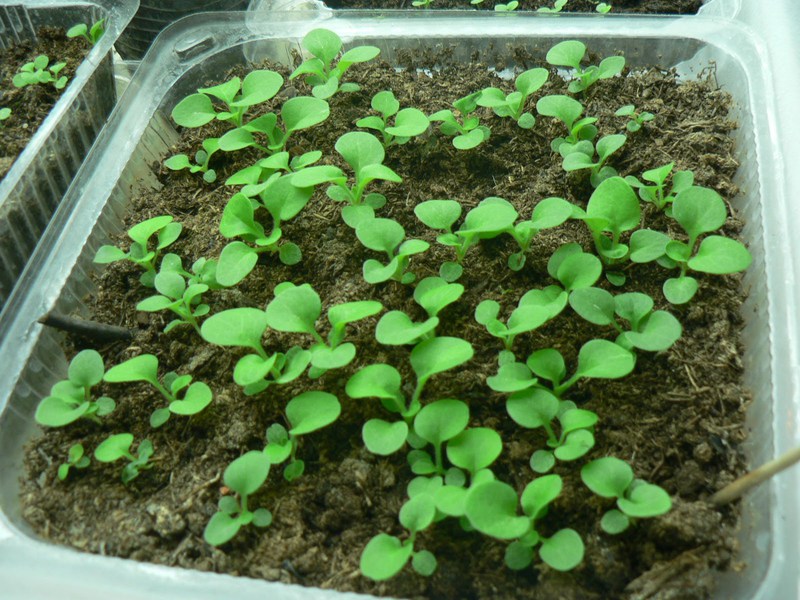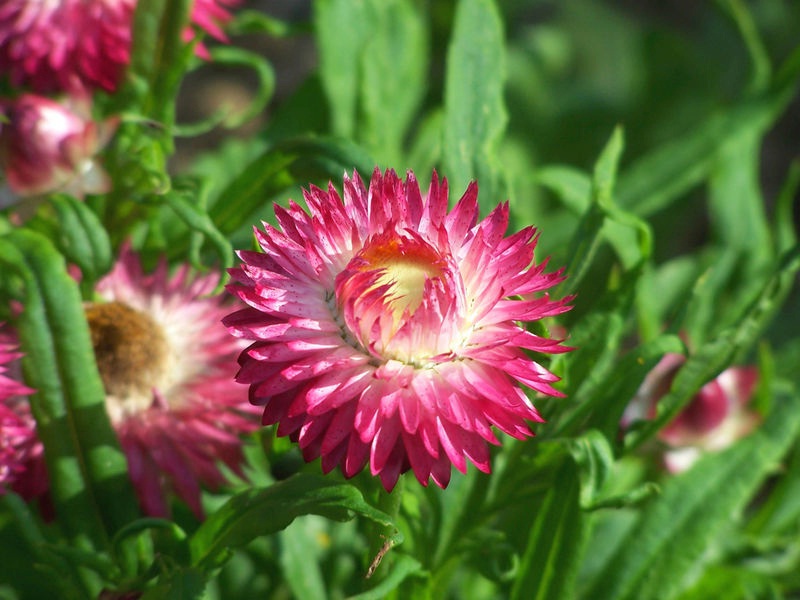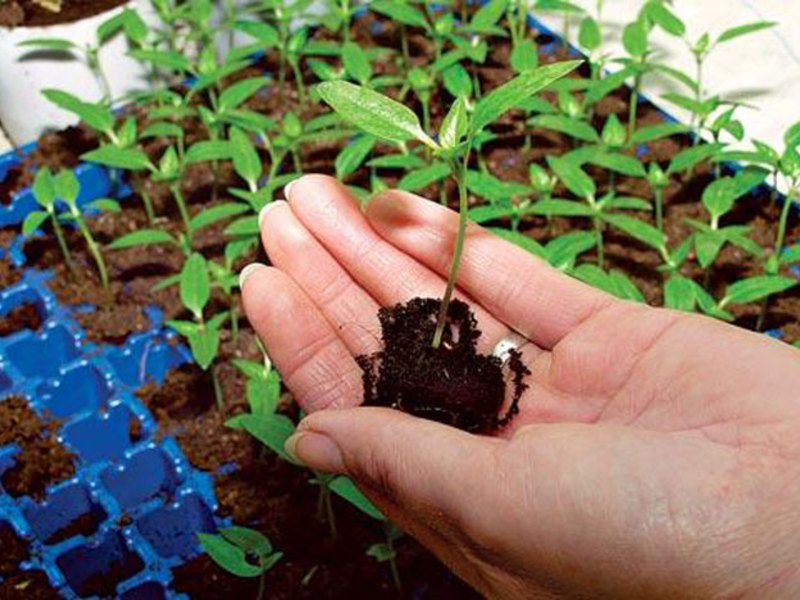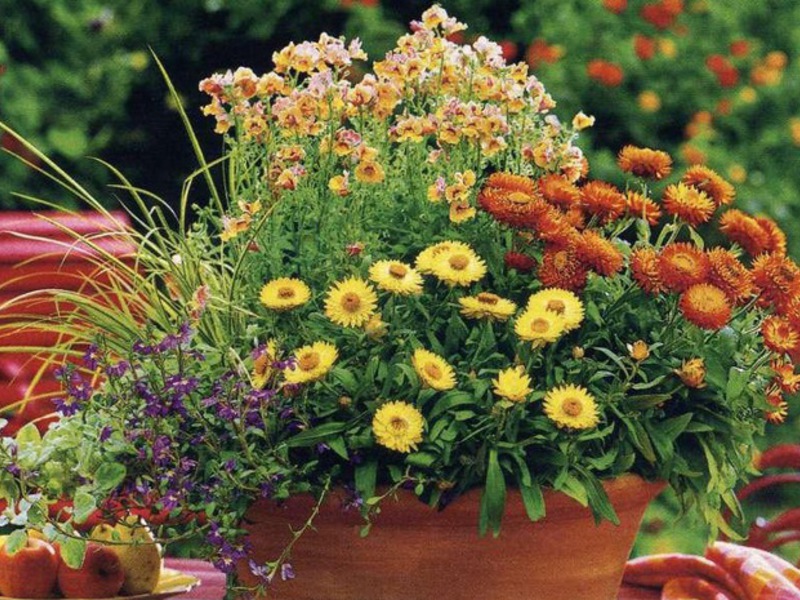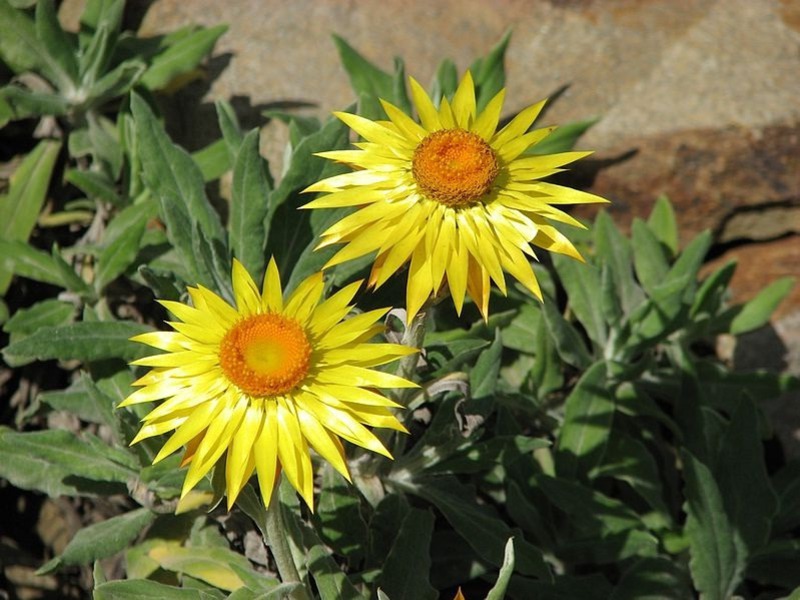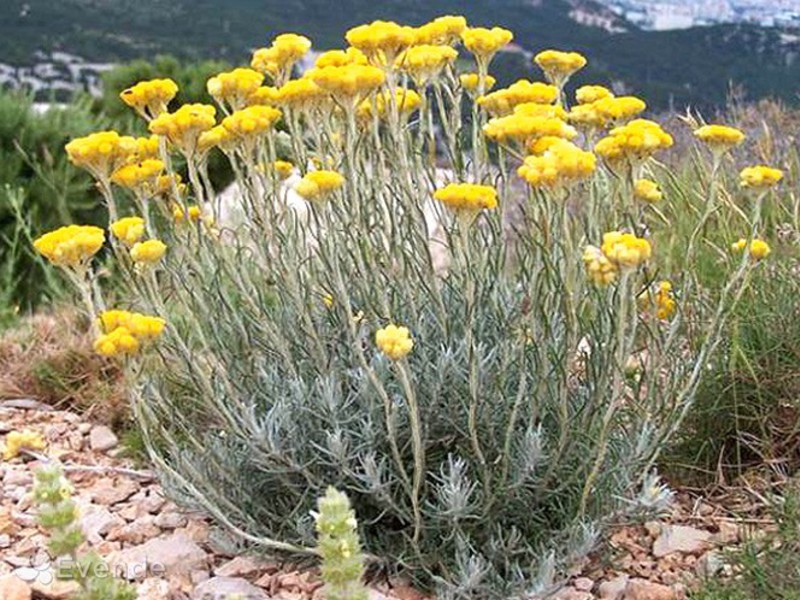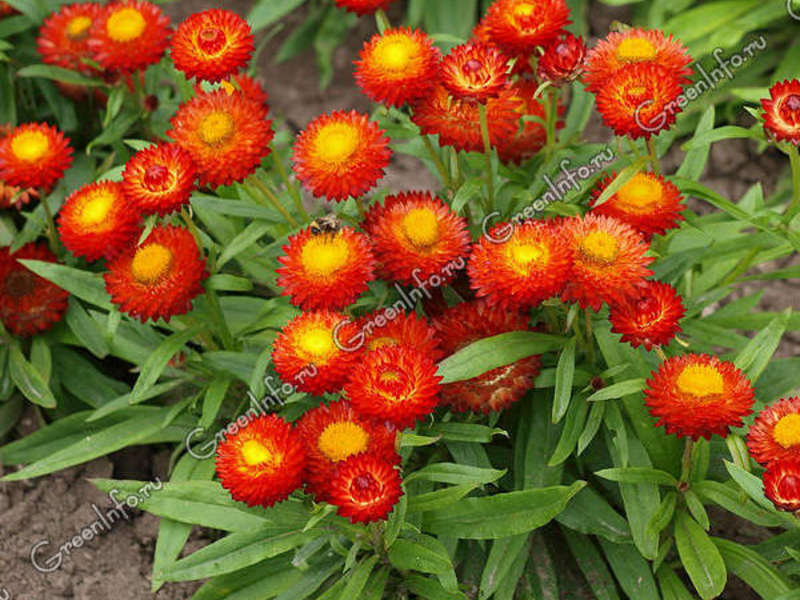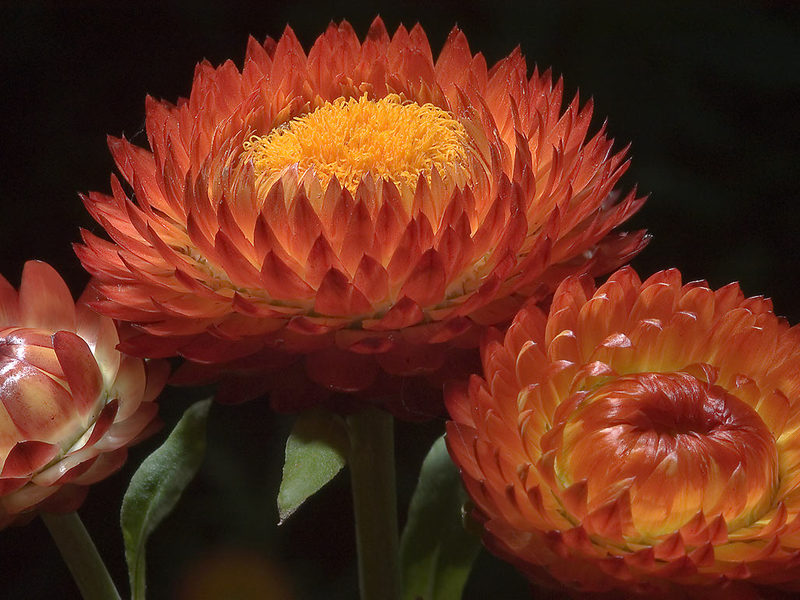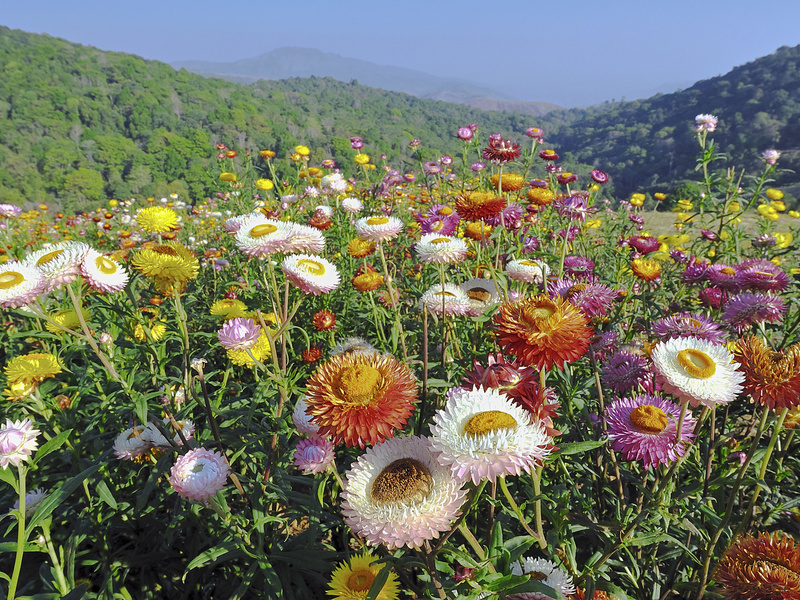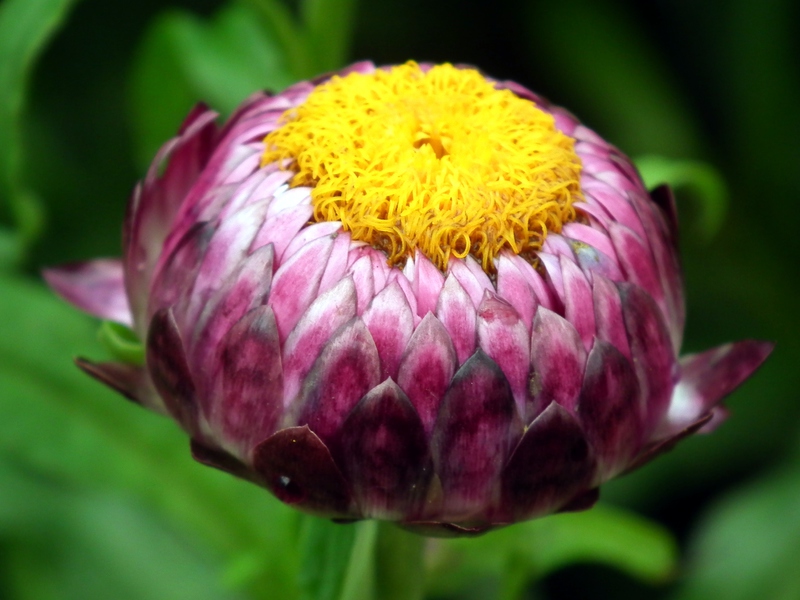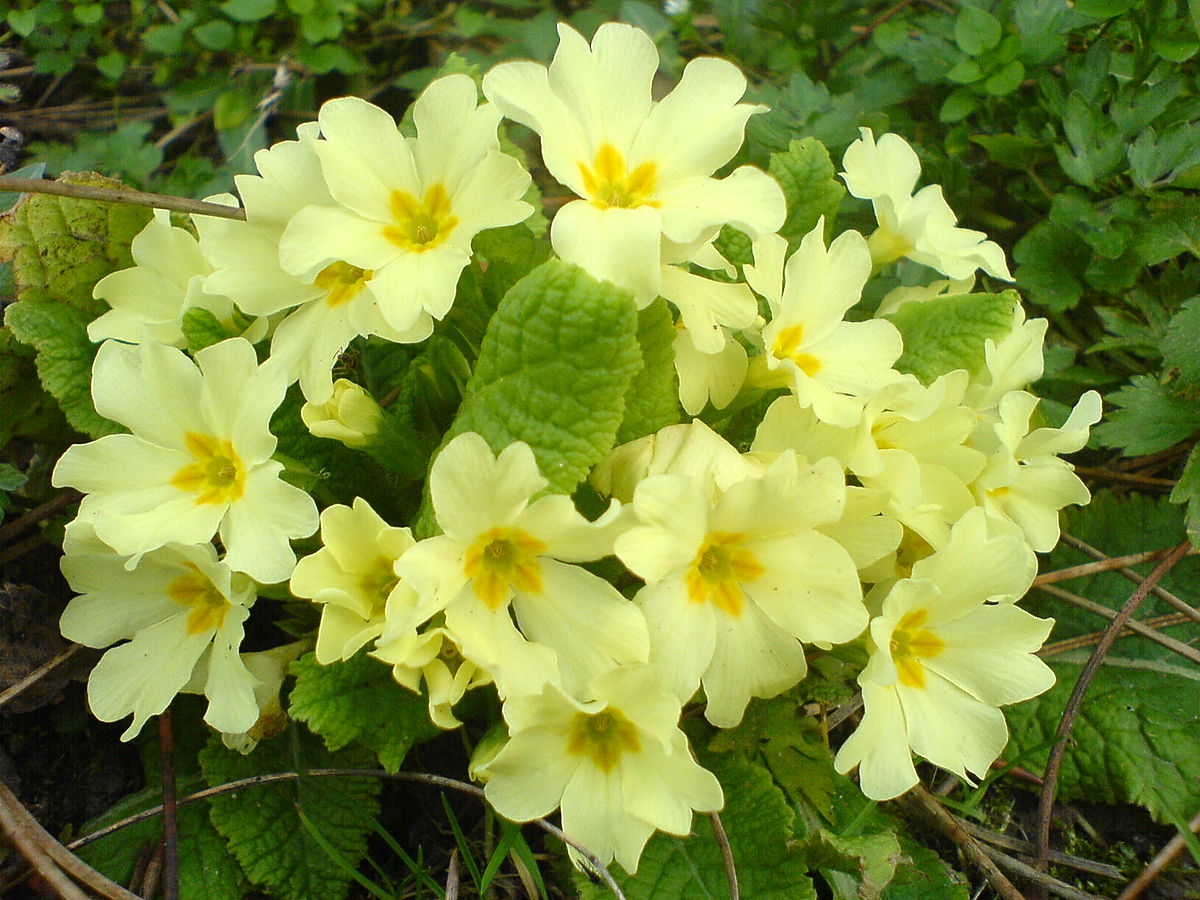A beautiful flower with a complex name, Gelikhrizum, is known to gardeners as immortelle or Tsmin. The plant has annual and perennial species. In the wild, it grows in South Africa and Australia. In our gardens, gelichrizums bloom until the very cold. They are also loved for their amazing property not to fade for a long time in the cut. Caring for them is simple, but it has its own characteristics, which we will discuss in our article.
Gelikhrizum: photo and description of the flower
The immortelle was brought to Europe from Australia and immediately loved by local gardeners... Gelichrizum is different:
- ribbed stem up to 120 cm high;
- branched top;
- narrow leaves of dark green color with edging on both sides;
- baskets of inflorescences with a diameter of 7 cm;
- dry petals with curled edges around the inflorescences;
- porous or smooth fringed base of the flower head;
- inflorescences in the form of flat shields or panicles;
- varied color, except blue.
You can describe the beauty of the cmin flower for a long time, but it is best to look at its various options at the photo in our gallery.
Varieties of gelichrizum
Australia and the African continent more than 500 species of immortelle grow... Some of them grow like grass, others form a bush. In gardening, about 30 species are used. The most popular are:
 Immortelle Bracts. Plant with tubular flowers of red, orange and white. On inflorescences, they are located in 6 pieces in the form of a basket. It has a straight stem and lanceolate leaves. Blooms from July to October.
Immortelle Bracts. Plant with tubular flowers of red, orange and white. On inflorescences, they are located in 6 pieces in the form of a basket. It has a straight stem and lanceolate leaves. Blooms from July to October.- Gelikhrizum Coral. The plant, originally from New Zealand, has a height of only 24 cm. It is used for growing in rockeries and rock gardens. On branches sticking out in different directions, there are small grayish leaves with pubescence and small yellow or white inflorescences.
- Tsmin Milfovidovy. The miniature plant of the original species is one of the most beautiful of its kind. Its flowers consist of reed petals, which are bright pink on the outside and white on the inside. When flowering, the Milfoid immortelle forms a profusely flowering low carpet, with which you can decorate any relief. Flowering lasts from late spring until autumn.
- Gelichrizum Daisy-flowered. The bush with diameters up to 50 cm has a height of only 8 cm. On its short peduncles there are dry white inflorescences and small pubescent gray leaves. After planting, it instantly expands, forming a rug. Flowering begins in June.
- Tsmin Sandy. Quite unpretentious plant with small yellow flowers. It grows up to 10 cm. It blooms from mid-summer to the very frost.
- Immortelle Narrow-leaved. The shrub is 30 cm high and has whitish-silvery narrow leaves. Used as a curb plant.
- Gelikhrizum Selago. A small unusual creeping bush densely covered with powdery, dark green shiny leaves. White baskets with yellow flowers are located at the end of each stem.
Reproduction of cmin
Annual species of immortelle can be propagated in three ways:
- seeds;
- dividing the bush;
- by cuttings.
Gelikhrizum: growing from seeds
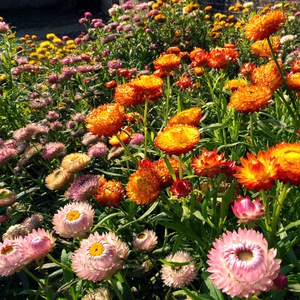 Seeds are sown in late March - early April.For this, the planting containers are filled with light soil, which should consist of peat and sand (1: 1). You can buy a special potting potting potting mix at any flower shop.
Seeds are sown in late March - early April.For this, the planting containers are filled with light soil, which should consist of peat and sand (1: 1). You can buy a special potting potting potting mix at any flower shop.
From above, the soil with seeds planted in it is sprayed with a spray bottle and covered with glass or polyethylene. In such a mini greenhouse, the sprouts will sprout together after about 9-11 days... On these days, the soil should be ventilated and checked for moisture. It shouldn't dry out.
Two weeks after germination, when the seedlings get stronger and grow up, they dive into larger containers or separate pots. The root system of the immortelle is very strong, so after planting it takes root well and quickly. Care for young plants is timely watering. The seedlings obtained from the seeds and cut down can be put into the greenhouse.
Gelikhrizum is planted in open ground in the last month of spring. Depending on the region, planting can be done in early, mid or late May, when the last frost will pass... The distance between young plants should be 15 to 25 cm. When growing cmin from seeds, it will begin to bloom in mid-July.
Low-growing plant varieties can be grown in a seedless way, sowing seeds in the first week of May directly in open ground. After the sprouts grow up and get stronger, they will need to be thinned out so that the distance between the plants is at least 15 cm. However, with this method of cultivation, Gelichrizum will begin to bloom only in August.
Cuttings
This is an easier way to breed the immortelle. For its implementation, apical rosette cuttings are cut from the mother plant in late July or early August. They can be rooted in the garden or in pots using a soil a mixture of earth, peat and sand (1: 1: 2). In order for the cuttings to take root better, they are covered with a special material or polyethylene on top, opening a shelter daily to ventilate the plant. As soon as the cuttings are rooted and grow, they can be planted in a permanent place in the open ground.
Dividing the bush
This type of propagation is suitable for perennial plants. Division and planting is done in spring. To do this, the helihrizum bush is dug up and divided into parts using a sharp knife. The cut points must be sprinkled with crushed charcoal. Delenki are immediately planted in a flower garden in a permanent place. Caring for them consists in regular watering and loosening the soil.
Planting and care in the open field
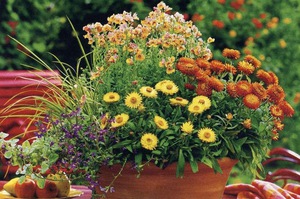 Tsmin is very fond of well-lit, sunny places where it grows in the wild. It is unpretentious to soils, so it can be planted in light soil with a good drainage system. The plant does not tolerate stagnant water.
Tsmin is very fond of well-lit, sunny places where it grows in the wild. It is unpretentious to soils, so it can be planted in light soil with a good drainage system. The plant does not tolerate stagnant water.
Before planting, the soil is dug up, loosened and fertilized. For this, special feeding for flowering plants or compost are used. Drainage is poured into the bottom of each prepared hole. The planted plant is well watered.
Watering and feeding
Gelichrizums can go without water for a long time, but they need to be watered regularly. The earth should not dry out. In dry weather, it is best to water a little every day.
Annual plants often do not need to feed, since fertilizers are applied to the soil already during planting. For longer flowering, gelichrizums can be fed at the end of summer with compost or liquid fertilizer for flowering plants.
Perennials need more frequent feeding. The first time fertilization is applied at the beginning of the growing season in the spring. Then two more times in summer and closer to autumn. You can use universal fertilizer for flowers or compost.
During the summer, it is necessary to regularly weed and loosen the soil around the bushes. In order for the bushes to bloom longer, wilted buds must be removed.
Wintering
In our regions, the immortelle does not hibernate in the open field.To preserve perennial plants, they need to be dug up, planted in pots and brought indoors.
Gelichrisums in landscape design
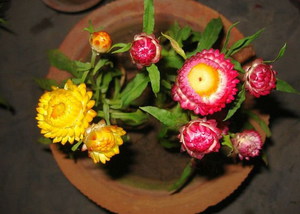 Beloved by many gardeners, immortelles can be use to decorate tall flower bedsdividing the garden space into zones or in the background of mixboxers.
Beloved by many gardeners, immortelles can be use to decorate tall flower bedsdividing the garden space into zones or in the background of mixboxers.
Rockeries and rockeries are decorated with low-growing varieties, planting them between stones and rubble. Here they look very good with undersized Iberis, Lobelia, Razuha, Shaved and Ground Cover Aescholzia and Stonecrop.
They are widely used for landscaping robots, flower beds and borders. In one flower bed, Tsmins get along well and look beautiful with thyme, rosemary, lavender, St. John's wort, sage, chamomile.
In the cold autumn time, when almost all the flowers have bloomed on the site, a bright flower garden from gilichrizum will delight the eye. And even after the onset of frost, cutting off the immortelle and putting it in a vase at home, you can admire its beautiful flowers for a long time.
